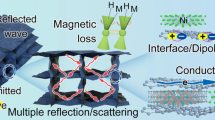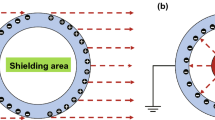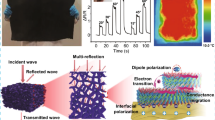Abstract
Piezoelectric materials are widely used in aerospace industry as a source of alternate energy for micro or nanoscale electronics because of voltage dependent actuation ability. This phenomena is of absolute importance in cubic reconnaissance satellites as they have maximum number of piezoelectric patches integrated in structure. In this research work, PZT patches in the satellite structure absorbs the mechanical and thermal energy from external environment as well as from internal fluctuations and convert them into electrical energy. This electrical energy can be utilized on the spot or can be stored in batteries for wireless sensors. The experimental setup and electronic circuit is designed in order to mimic the real time conditions based on direct effect of piezoelectricity. The effect of energy generation with respect to fatigue mechanical loading condition is analyzed based on equivalent circuit method. A numerical simulation model based on commercial software ABAQUS Standard has been developed. The developed model has predicted the experimental outcome with less than \(3\%\) error. The analytical results are in good agreement with experimental as well as with numerical calculations with less than \(5\%\) error. The maximum output energy obtained in this study is 0.8 nJ.











Similar content being viewed by others
References
Annamdas VGM, Soh CK (2016) Contactless load monitoring in near-field with surface localized spoof plasmons—a new breed of metamaterials for health of engineering structures. Sens Actuators A Phys 244:156–165
Annamdas VGM, Yang Y, Soh CK (2010) Impedance based concrete monitoring using embedded PZT sensors. Int J Civil Struct Eng 1(3):414
Azizi S, Ghodsi A, Jafari H, Ghazavi MR (2016) A conceptual study on the dynamics of a piezoelectric mems (micro electro mechanical system) energy harvester. Energy 96:495–506
Belward AS, Skøien Jo (2015) Who launched what, when and why; trends in global land-cover observation capacity from civilian earth observation satellites. ISPRS J Photogramm Remote Sens 103:115–128
Bérend N, Olive X (2016) Bi-objective optimization of a multiple-target active debris removal mission. Acta Astronaut 122:324–335
Boughaleb J, Arnaud A, Monfray S, Cottinet PJ, Quenard S, Boeuf F, Guyomar D, Skotnicki T (2016) Design and performance benchmark of various architectures of a piezoelectric bimetallic strip heat engine. Opt Mater 56:110–115
Butt Z, Pasha RA, Qayyum F, Anjum Z, Ahmad N, Elahi H (2016) Generation of electrical energy using lead zirconate titanate (PZT-5A) piezoelectric material: analytical, numerical and experimental verifications. J Mech Sci Technol 30(8):3553–3558
Chen H, Dong X, Zeng T, Zhou Z, Yang H (2007) The mechanical and electric properties of infiltrated PZT/polymer composites. Ceram Int 33(7):1369–1374
Elahi H, Pasha RA, Khan MZ (2014) Experimental determination of mechanical quality factor of lead zirconate titanate (PZT-5A4E) by equivalent circuit method under various thermal and resistance conditions. Univ Eng Technol Taxila Tech J 19(2):1
Elahi H, Butt Z, Eugnei M, Gaudenzi P, Israr A (2017) Effects of variable resistance on smart structures of cubic reconnaissance satellites in various thermal and frequency shocking conditions. J Mech Sci Technol 31(9):4151–4157
Elahi H, Eugeni M, Gaudenzi P (2018a) Electromechanical degradation of piezoelectric patches. In: Altenbach H, Carrera E, Kulikov G (eds) Analysis and modelling of advanced structures and smart systems. Springer, Singapore, pp 35–44
Elahi H, Eugeni M, Gaudenzi P, Qayyum F, Swati RF, Khan HM (2018b) Response of piezoelectric materials on thermomechanical shocking and electrical shocking for aerospace applications. In: Microsystems Technologies, pp 1–8
Fialka J, Benes P, Michlovska L, Klusacek S, Pikula S, Dohnal P, Havranek Z (2016) Measurement of thermal depolarization effects in piezoelectric coefficients of soft PZT ceramics via the frequency and direct methods. J Eur Ceram Soc 36(11):2727–2738
Fisco NR, Adeli H (2011) Smart structures: part I—active and semi-active control. Sci Iran 18(3):275–284
Gasbarri P, Monti R, Sabatini M (2014) Very large space structures: non-linear control and robustness to structural uncertainties. Acta Astronaut 93:252–265
Gaudenzi P (2009) Smart structures: physical behaviour, mathematical modelling and applications. Wiley, Hoboken
Gaudenzi P, Nardi D, Chiappetta I, Atek S, Lampani L, Pasquali M, Sarasini F, Tirilló J, Valente T (2015) Sparse sensing detection of impact-induced delaminations in composite laminates. Compos Struct 133:1209–1219
Huang H-H, Chen K-S (2016) Design, analysis, and experimental studies of a novel PVDF-based piezoelectric energy harvester with beating mechanisms. Sens Actuators A Phys 238:317–328
Huang S-C, Tsai C-Y (2016) Theoretical analysis of a new adjustable broadband PZT beam vibration energy harvester. Int J Mech Sci 105:304–314
Lei Q, Shenfang Y, Qiang W, Yajie S, Weiwei Y (2009) Design and experiment of PZT network-based structural health monitoring scanning system. Chin J Aeronaut 22(5):505–512
Liu P, Yu T, Bui TQ, Zhang C, Xu Y, Lim CW (2014) Transient thermal shock fracture analysis of functionally graded piezoelectric materials by the extended finite element method. Int J Solids Struct 51(11–12):2167–2182
Lu F, Lee HP, Lim SP (2003) Modeling and analysis of micro piezoelectric power generators for micro-electromechanical-systems applications. Smart Mater Struct 13(1):57
Madinei H, Khodaparast HH, Adhikari S, Friswell MI (2016) Design of MEMS piezoelectric harvesters with electrostatically adjustable resonance frequency. Mech Syst Signal Process 81:360–374
Noor AK, Venneri SL, Paul DB, Hopkins MA (2000) Structures technology for future aerospace systems. Comput Struct 74(5):507–519
Olivieri L, Francesconi A (2016) Design and test of a semiandrogynous docking mechanism for small satellites. Acta Astronaut 122:219–230
Porn S, Nasser H, Coelho RF, Belouettar S, Deraemaeker A (2016) Level set based structural optimization of distributed piezoelectric modal sensors for plate structures. Int J Solids Struct 80:348–358
Rehman WU, Yuanxin L, Guiyun J, Yongqin W, Yun X, Iqbal MN, Zaheer MA, Azhar I, Elahi H, Xiaogao Y (2017a) Control of an oil film thickness in a hydrostatic journal bearing under different dynamic conditions. In: Control and decision conference (CCDC), 2017 29th Chinese, IEEE, pp 5072–5076
Rehman WU, Nawaz H, Wang S, Wang X, Luo Y, Yun X, Iqbal MN, Zaheer MA, Azhar I, Elahi H (2017b) Trajectory based motion synchronization in a dissimilar redundant actuation system for a large civil aircraft. In: Control and decision conference (CCDC), 2017 29th Chinese, IEEE, pp 5010–5015
Roy DP, Wulder MA, Loveland TR, Woodcock CE, Allen RG, Anderson MC, Helder D, Irons JR, Johnson DM, Kennedy R et al (2014) Landsat-8: science and product vision for terrestrial global change research. Remote Sens Environ 145:154–172
Sheng GG, Wang X (2010) Response and control of functionally graded laminated piezoelectric shells under thermal shock and moving loadings. Compos Struct 93(1):132–141
Vasic D, Chen Y-Y, Costa F (2014) Self-powered piezoelectric energy harvester for bicycle. J Mech Sci Technol 28(7):2501–2510
Vel SS, Baillargeon BP (2005) Analysis of static deformation, vibration and active damping of cylindrical composite shells with piezoelectric shear actuators. J Vib Acoust 127(4):395–407
Waqar S, Asad S, Ahmad S, Abbas CA, Elahi H (2017) Effect of drilling parameters on hole quality of Ti-6Al-4V titanium alloy in dry drilling. In: Materials science forum, vol 880, pp 33–36, Trans Tech Publ
Author information
Authors and Affiliations
Corresponding author
Additional information
Publisher's Note
Springer Nature remains neutral with regard to jurisdictional claims in published maps and institutional affiliations.
Rights and permissions
About this article
Cite this article
Elahi, H., Eugeni, M., Gaudenzi, P. et al. Piezoelectric thermo electromechanical energy harvester for reconnaissance satellite structure. Microsyst Technol 25, 665–672 (2019). https://doi.org/10.1007/s00542-018-3994-z
Received:
Accepted:
Published:
Issue Date:
DOI: https://doi.org/10.1007/s00542-018-3994-z




